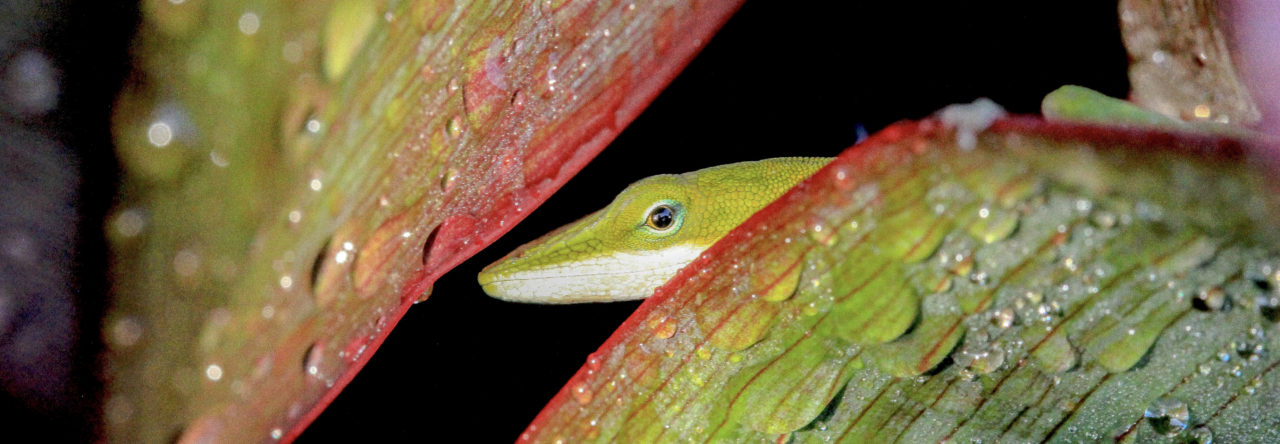
One of these species has had its genome sequenced, and the other has independently evolved to look very similar and live in the same environment. The anole genome will make anoles an even more powerful group in which to study evolutionary convergence. Photos by Melissa Losos (left) and Pete Humphrey (right).
When the genome of Anolis carolinensis is finally published, most attention will focus on how this genome, the first reptile to be sequenced (not including birds), differs from other vertebrate genomes, and what these differences may tell us about genome evolution. No doubt this will be interesting, but the real value of this genome–in my unbiased opinion–resides in the questions we finally will be able to address about the evolutionary process, particularly in one model system of evolutionary study, Anolis lizards. Chris Schneider published a perceptive article, “Exploiting genomic resources in studies of speciation and adaptive radiation of lizards in the genus Anolis,” on this topic three years ago, and I will briefly expand on his points here.
An anole genome will be useful for evolutionary studies in two ways. First, a long-standing question in evolutionary biology concerns the genetic basis of convergent evolution (i.e., when two or more evolutionary lineages independently evolve similar features). Do convergent phenotypes arise by convergent evolution of the same genetic changes, or do different lineages utilize different mutations to produce the same phenotype? In other words, does convergence at the phenotypic level result from convergent change at the genetic level, or can different genetic changes produce the same phenotypic response? In the last few years, molecular evolutionary biologists have produced a wealth of studies investigating whether convergent changes in coat color in rodents, eye and spine loss in fish, bristle loss in fruit flies and many other changes are the result of changes in the same gene, even some times by the very same genetic mutation. Underlying these questions are more fundamental questions about constraints and the predictability of evolution (these topics have been reviewed a number of times in the last couple of years, most recently in a paper by me, in a paper which refers to other recent reviews).

The anole ecomorphs, habitat specialists behaviorally and morphologically adapted to use different parts of the environment. The same set of ecomorphs (with several exceptions) have evolved independently on each island in the Greater Antilles. Figure from "Lizards in an Evolutionary Tree," based on earlier figures in Ernest Williams' work.
Anolis lizards are, of course, the poster child for evolutionary studies of convergent evolution. Indeed, convergence has run rampant in this clade. AA has prattled on endlessly about the famous anole ecomorphs, a set of habitat specialist types that have evolved repeatedly on each island in the Greater Antilles to occupy different habitat niches. This convergence is usually studied in terms of limb length, tail length, and toepad dimensions: arboreal species have big toepads, twig species short legs, grass species long tails, and so on, with these traits independently evolving many times. But the ecomorphs are convergent in many other traits that have received less attention: head and pelvis dimensions, sexual dimorphism in both size and shape, territorial and foraging behavior, to name a few, and the more closely we look, the more convergent traits we find. And, further, anole convergence is not entirely an ecomorph phenomenon; some traits vary within an ecomorph class, but are convergent among species in different ecomorph classes, for example, thermal physiology and dewlap color.
In other words, there’s more convergence in Anolis than you can shake a stick at, and the availability of the anole genome sequence will provide the tools to investigate its underlying genetic basis.
Read More












